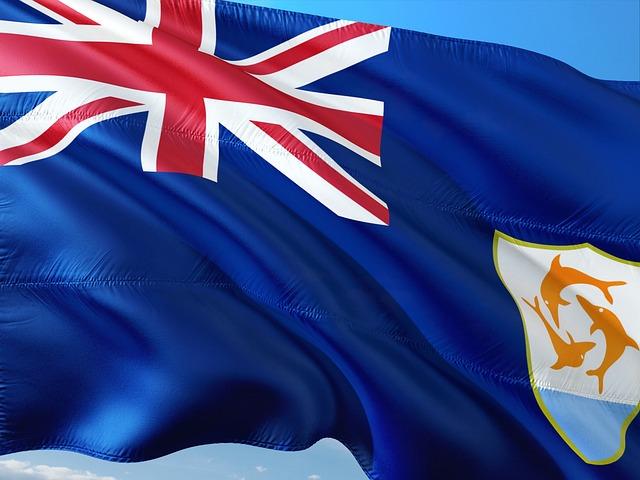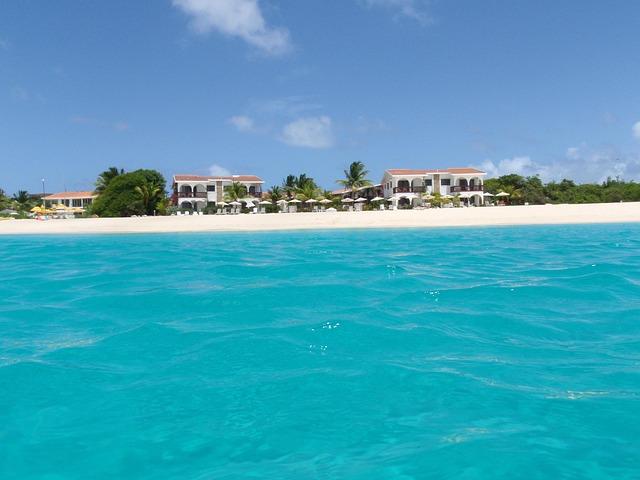Anguilla Profile: A Jewel in the Caribbean
Nestled in the crystal-clear waters of the Caribbean Sea, Anguilla is a small yet captivating island synonymous with pristine beaches and vibrant culture. While often overshadowed by its more prominent neighbors, Anguilla boasts a unique charm that draws travelers seeking both tranquility and adventure.This British Overseas Territory is renowned for its luxurious resorts, world-class dining, and warm hospitality, making it a premier destination for vacationers from around the globe. In this profile, we delve into Anguilla’s rich history, economic landscape, and the diverse influences that shape its identity, offering a comprehensive look at what makes this island a hidden gem in the heart of the Caribbean.
Anguilla’s Geography and Climate: An Overview
Anguilla, a British Overseas Territory located in the eastern Caribbean, showcases a diverse range of geographical features that contribute to its unique charm. The island stretches approximately 16 miles in length and is less than 3 miles across at its widest point, forming a quintessential Caribbean landscape characterized by stunning beaches and tranquil waters.
The coastline is dotted with an array of white-sand beaches, with notable spots including:
- Shoal Bay – Renowned for its crystal-clear waters and vibrant coral reefs.
- Maundays Bay – A picturesque cove perfect for relaxation and water sports.
- Rendezvous Bay – Famed for its panoramic views and idyllic sunsets.
In terms of climate, Anguilla enjoys a tropical marine climate, leading to relatively consistent temperatures throughout the year. The average high temperature hovers around 82°F to 86°F, while the evenings are comfortably cooler. Rainfall varies, but the island experiences a distinct dry season typically from december to April.
| Climate Aspect | Details |
|---|---|
| Annual Average Temperature | 82°F (28°C) |
| Wet Season | May to November |
| dry Season | December to April |
Hurricanes can affect the region during the Atlantic hurricane season, which lasts from June to November, although Anguilla often demonstrates resilience in the face of natural challenges. This captivating mix of geography and climate not only supports a vibrant ecosystem but also solidifies Anguilla’s status as a prime destination for travelers seeking sun-soaked adventures.
Cultural heritage and Local Traditions of Anguilla
Anguilla’s rich cultural heritage is a vibrant tapestry woven from its history, traditions, and the spirit of its people. the island’s cultural identity is heavily influenced by its african ancestry, reflected in various aspects of daily life and celebrations. One of the most notable expressions of this heritage is in the island’s music and dance. Festivals like the Anguilla Festival of Arts and the annual carnival, known as “The Summer Festival,” showcase local talents in calypso, reggae, and traditional folk music, allowing residents and visitors alike to revel in the rhythms of the island.
The culinary landscape of anguilla is another testament to its cultural heritage.Local cuisine blends Caribbean flavors with influences from European settlers. Visitors can indulge in a variety of dishes, such as:
- Barbecue fish: A staple at beach parties and gatherings.
- Saltfish and plantains: A beloved breakfast dish.
- Fungi: A popular side made from cornmeal.
Rituals and customs also play a vital role in preserving the island’s cultural identity. Throughout the year, residents honor their heritage through various traditional events:
| Event | Date | Description |
|---|---|---|
| Summer Festival | Late July | A week-long celebration featuring parades, pageants, and local music. |
| Festival Del Mar | Early May | A food and cultural festival celebrating the sea, complete with fresh seafood. |
| Reverend’s Day | September 15 | Honoring local heritage and the contributions of Anguilla’s pastors. |
These gatherings not only foster community spirit but also serve as important reminders of Anguilla’s history and the collective memory of its people.Through storytelling and shared experiences, the citizens of Anguilla ensure that their traditions continue to thrive, creating an enduring legacy that captivates all who visit the island.
Economic Landscape: Tourism and Beyond
Anguilla’s economy is predominantly driven by the tourism sector, which accounts for a important portion of the island’s GDP. The pristine beaches, luxury resorts, and vibrant culinary scene attract visitors from around the globe, particularly from the United States and the United Kingdom.The government continuously invests in enhancing the tourism infrastructure, ensuring that Anguilla remains a top destination for travelers seeking both relaxation and adventure.
Beyond tourism, the economic landscape of Anguilla is diversifying to include:
- Financial Services: The island has developed a reputation as an offshore financial center, offering various financial services that cater to international clients.
- Real Estate Development: With the demand for luxury properties on the rise, real estate has emerged as a lucrative sector, contributing significantly to the local economy.
- Agriculture and Fishing: Although less prominent than tourism, agriculture and fishing sectors play an essential role in sustaining local communities, providing fresh produce and seafood to both residents and visitors.
As Anguilla looks toward the future, lasting tourism practices are becoming increasingly critical. Balancing economic growth with environmental preservation is essential for the longevity of the island’s natural beauty and heritage.
| Sector | Contribution to GDP |
|---|---|
| Tourism | 75% |
| Financial Services | 15% |
| Agriculture and Fishing | 10% |
Education and Healthcare in Anguilla
Anguilla’s approach to education is marked by a commitment to accessibility and quality. The education system, managed under the Ministry of Education, seeks to provide a holistic learning habitat for its youth. Children typically begin their formal education at the age of five,attending primary schools for approximately six years before moving on to secondary education. The government emphasizes not only academic achievements but also the development of life skills and social responsibilities. Key aspects of the education system include:
- Global Access: Education is free and mandatory until the age of 16.
- Curriculum Development: Continuous updates to the curriculum to incorporate modern skills such as technology and critical thinking.
- Extracurricular Activities: Opportunities for students to engage in sports, arts, and community service to encourage well-rounded development.
Conversely, the healthcare system in Anguilla is a blend of public and private services aimed at ensuring the well-being of its residents. The primary healthcare facilities are concentrated in the capital, The Valley, with the Princess Alexandra Hospital being the central healthcare provider. The government prioritizes accessible healthcare, which is reflected in their initiatives to improve service delivery and health infrastructure. Key features of Anguilla’s healthcare landscape include:
- Comprehensive Care: Basic healthcare services are available to all citizens, with an emphasis on preventative care.
- Emergency Services: Equipped to handle medical emergencies with a dedicated response team.
- Health Collaboration: Engagement with international health organizations to enhance health services and education.
Recent efforts have focused on expanding healthcare facilities and adopting new technologies aimed at improving patient outcomes. public health campaigns targeting chronic diseases, mental health awareness, and maternal and child health are key components of the government’s agenda.
| Healthcare Aspect | Details |
|---|---|
| Primary Care Facilities | Available in all districts |
| Specialist Services | Limited and referral-based |
| Health Initiatives | Focus on prevention and education |
Environmental Conservation Efforts on the Island
Anguilla has recently made significant strides in environmental conservation, aimed at preserving its rich biodiversity and unique ecosystems. The island’s government, along with various non-governmental organizations, is actively engaged in initiatives that emphasize sustainability and the protection of its natural resources. Key efforts include:
- Marine Protected Areas (MPAs): The establishment of designated MPAs has been crucial in safeguarding marine life, including coral reefs and endangered species.
- Reforestation Programs: Community-driven reforestation initiatives are underway to restore native vegetation, which enhances carbon sequestration and provides habitats for local wildlife.
- Education and awareness Campaigns: Local NGOs are running educational programs in schools and communities to raise awareness about the importance of environmental stewardship.
In partnership with international environmental organizations,Anguilla is also focusing on reducing plastic pollution,a significant challenge for many island nations. Through public awareness campaigns and regulations on single-use plastics, the island is encouraging residents and tourists alike to adopt more sustainable practices. The government has set enterprising targets to minimize waste and improve recycling rates, demonstrating a commitment to a cleaner environment.
The results of these efforts are promising, as environmental indicators start to show advancement. Key metrics, such as the health of coral reefs and populations of native species, are monitored regularly. In addition, Anguilla’s sustainable tourism initiatives are gaining traction, with eco-kind accommodations and activities that promote conservation while providing visitors with an unforgettable experience. This holistic approach not only protects the island’s natural beauty but also boosts the local economy, ensuring a brighter future for generations to come.
Recommendations for Travelers: Making the Most of Your Visit to Anguilla
Anguilla is a stunning tropical paradise that offers a unique blend of relaxation and adventure for every type of traveler. To ensure an unforgettable experience, consider these essential recommendations:
- Explore the beaches: Anguilla is renowned for its pristine beaches. Spend time at Shoal Bay East, known for its soft white sands and crystal-clear waters, or visit Meads Bay for a more tranquil atmosphere.
- Indulge in Local Cuisine: Savor the island’s tasty offerings by dining at local restaurants. Don’t miss out on the famous Barbecue Lobster at Blanchard’s Beach Shack or the Caribbean curries at Veya Restaurant.
- Experience Water Activities: take advantage of the ample water sports available, from snorkeling at Little bay to paddleboarding in prickly Pear Cays.For the more adventurous, try windsurfing or kayaking.
- Cultural Insights: Immerse yourself in the island’s rich history by visiting the Heritage Museum in East End and engaging with local artisans at the Anguilla Arts and Crafts Association.
For those looking to optimize their travel logistics, consider the following:
| Tips | Details |
|---|---|
| Best Time to Visit | Between December and April, when the weather is most pleasant. |
| Getting Around | Renting a car is advisable, as public transport is limited. |
| Currency | The local currency is the Eastern Caribbean Dollar, but US dollars are widely accepted. |
| Accommodation | Consider boutique hotels or beachfront villas for a more personalized experience. |
By implementing these tips, travelers can truly make the most of their journey through Anguilla, creating lasting memories in this idyllic destination.
To Conclude
Anguilla stands as a remarkable example of a resilient small island community rich in culture, history, and natural beauty. Its strategic location in the Caribbean has shaped its unique identity, drawing visitors from around the globe who seek both relaxation and adventure. Despite the challenges it faces, including the impact of climate change and economic dependency on tourism, Anguilla continues to strive for sustainable development while preserving its heritage. The island’s commitment to both its people and the environment ensures that it not only remains a destination of choice but also a beacon of hope for small nations navigating modern global challenges. as we draw back from this examination, Anguilla’s story is far from over; it is a narrative of optimism and perseverance, emblematic of the broader Caribbean experience.
